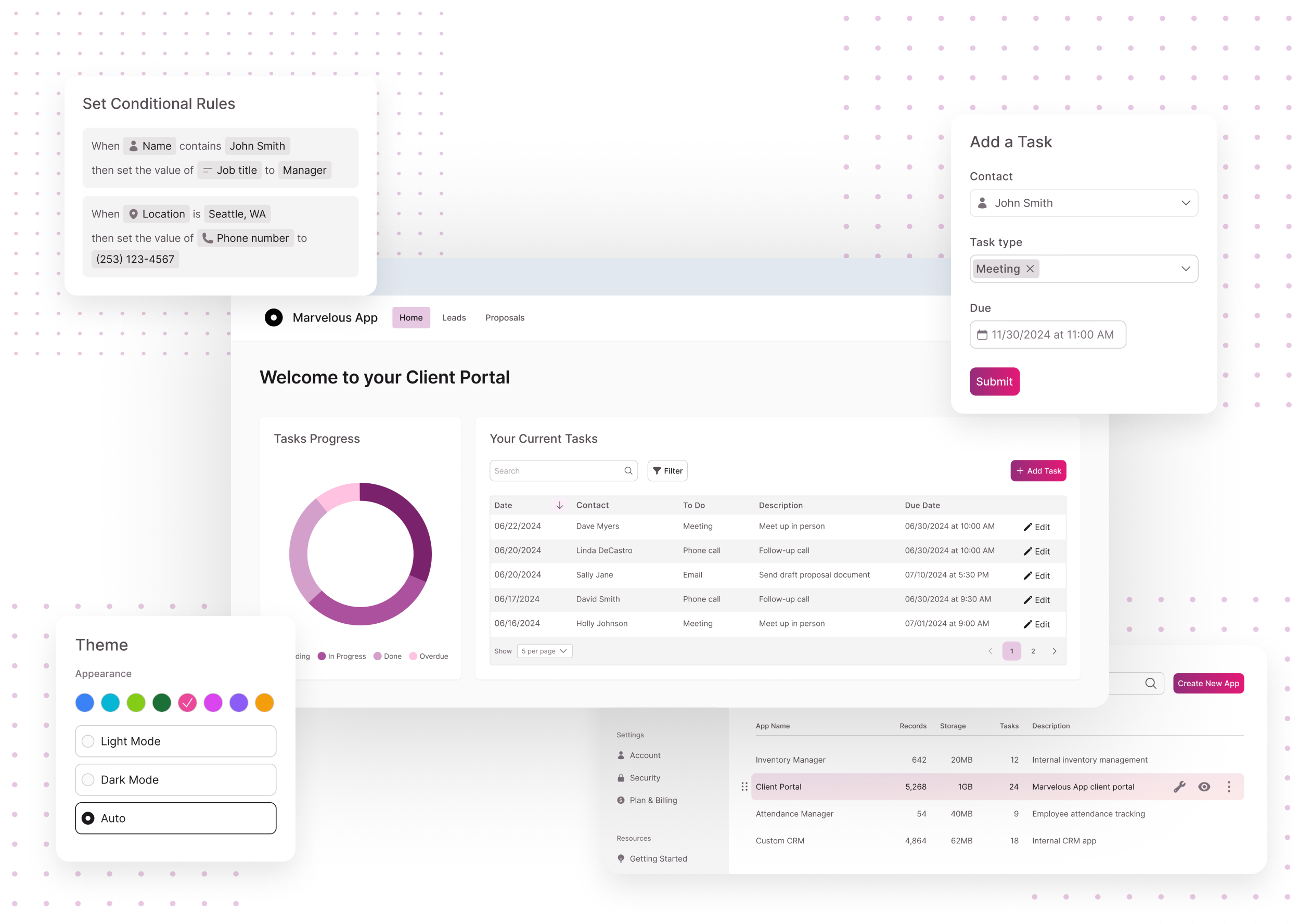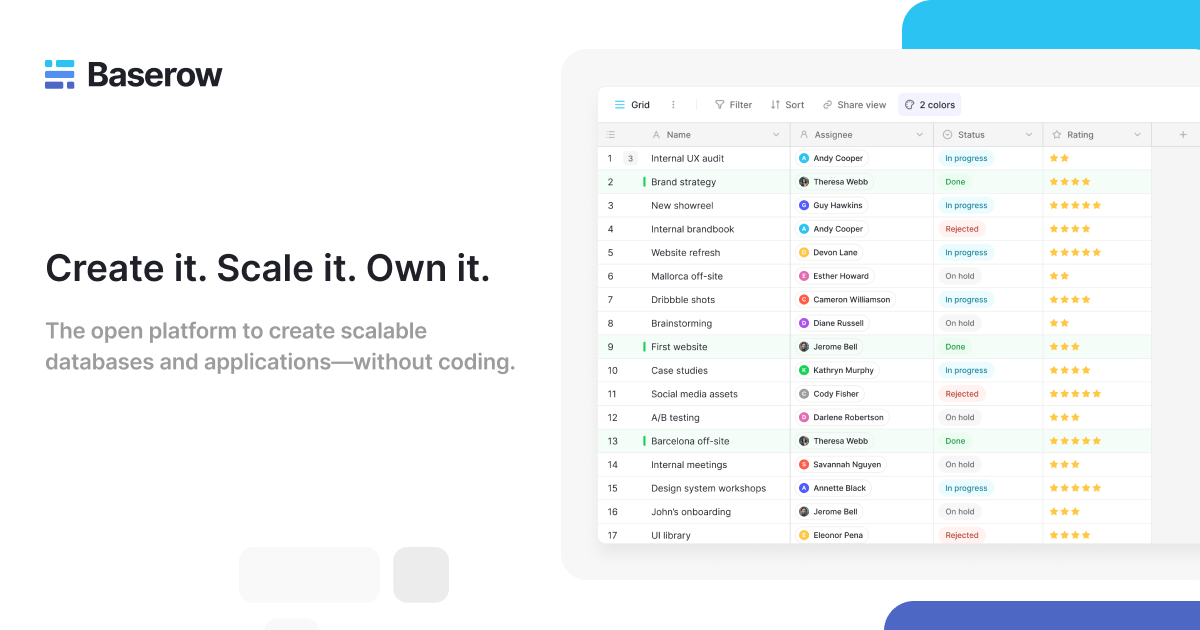Develop Open System Databases Conveniently with the most effective No-Code Devices Available
Wiki Article
Discovering the Advantages of Scalable Data Sources That Need No Coding Abilities for Efficient Data Monitoring Solutions
The development of scalable databases that get rid of the need for coding abilities offers a transformative possibility for companies seeking efficient data monitoring solutions. As we consider the implications of such developments, it ends up being vital to check out just how they can improve the landscape of information monitoring and drive lasting development in a competitive setting.Enhanced Ease Of Access for Individuals
Improved accessibility for customers is an important element of scalable data sources, making sure that data management systems are user-friendly and instinctive. In a period where data-driven choices are paramount, accessibility permits a broader variety of individuals, including those without extensive technological expertise, to involve with data source systems efficiently. This democratization of data accessibility promotes boosted partnership across divisions, equipping employees to make and extract understandings notified decisions.Straightforward user interfaces, such as aesthetic data and drag-and-drop attributes representation, streamline complicated information interactions. These improvements minimize the learning curve linked with traditional database administration, allowing users to concentrate on leveraging information as opposed to facing technical intricacies. In addition, scalable databases often include real-time analytics and customizable control panels, providing individuals with prompt insights customized to their details requirements.

Cost-Effectiveness and Source Savings
Reliable data monitoring not just rests on access however additionally on cost-effectiveness and resource financial savings. Scalable databases made for individuals without coding skills significantly minimize financial problems generally linked with traditional data source management systems. By getting rid of the need for specialized programs proficiency, companies can allocate their sources more effectively, concentrating funds on core organization tasks instead of comprehensive training or working with competent employees.Furthermore, these data sources usually utilize cloud-based options, which better decrease expenses connected to equipment and maintenance. Organizations can scale their data source solutions according to their requirements, avoiding the expenses sustained from over-provisioning sources. This flexibility indicates businesses can adapt to changing demands without incurring unnecessary expenses, bring about significant long-term savings.
Additionally, easy to use user interfaces enhance information access and monitoring procedures, lowering the time spent on administrative tasks. This performance translates right into labor price savings, allowing teams to concentrate on strategic efforts instead of regular upkeep. On the whole, adopting scalable databases that call for no coding abilities promotes an extra cost-effective method to data management, making it possible for companies to maximize their resources while keeping high degrees of functional efficiency.
Improved Cooperation Across Teams

Moreover, scalable databases assist in smooth communication amongst team participants. With user-friendly interfaces that need no coding skills, staff members can easily create, change, and share reports or dashboards customized to their certain needs. This democratization of information encourages non-technical users to contribute insights, see post enhancing the collective atmosphere.
Furthermore, these data sources support simultaneous access, permitting numerous individuals to service the very same dataset at the same time. This function improves productivity, as groups can take part in joint information analysis without the risk of version control issues. The capacity to leave remarks or notes directly within the database even more promotes discussion and clarifies data interpretations.
Streamlined Information Monitoring Processes
In today's data-driven atmosphere, organizations recognize the need of structured data administration processes to take full advantage of efficiency and accuracy. By leveraging scalable databases that need no coding skills, companies can simplify their information handling and decrease the complexities generally related to typical database systems. This ease of access encourages non-technical customers to engage straight with information, helping with quicker decision-making and reducing dependence on specialized IT personnel.Structured data monitoring processes enhance operations by automating routine jobs such as data entry, validation, and coverage. Automated data combination makes sure that details from various sources is accumulated seamlessly, removing silos and cultivating an unified sight of vital business metrics (no-code). Moreover, user-friendly user interfaces allow workers to adjust data quickly, enabling them to produce insights that drive critical efforts without the requirement for substantial training.
This effectiveness not just accelerates operational procedures however additionally reduces the capacity for human mistake, ensuring that data stays exact and reputable. Ultimately, streamlined data management processes with scalable data sources bring about boosted productivity, allowing organizations to focus on core activities while making sure that their information administration techniques are effective and efficient.
Scalability for Expanding Companies

For increasing business, the ability to scale up or down is crucial. A scalable data source can manage an influx of data produced from new customers, items, or services, ensuring that organization procedures remain nonstop. These data sources offer the capacity to handle peak loads effectively, which is important throughout periods of quick growth or seasonal spikes.
In addition, numerous scalable data source options are designed with user-friendly user interfaces that require no coding abilities, empowering non-technical personnel to manage data properly (no-code). This democratization of data monitoring allows companies to allocate resources purposefully and decrease dependence on specialized IT personnel
Ultimately, embracing a scalable data browse around here source not just improves functional performance but additionally fosters an atmosphere where businesses can evolve and innovate without the restrictions of typical database systems. This adaptability settings companies visit our website for lasting success in today's competitive landscape.
Final Thought
In final thought, scalable databases that call for no coding abilities offer substantial benefits for efficient information monitoring. By simplifying information management procedures and offering scalability for growing organizations, such options allow organizations to adjust to altering needs efficiently.Boosted ease of access for users is an essential facet of scalable data sources, making sure that information management systems are easy to use and user-friendly.Easy to use interfaces, such as drag-and-drop attributes and visual data representation, streamline intricate information communications. In general, adopting scalable data sources that need no coding skills promotes a much more economical approach to data management, making it possible for companies to optimize their sources while preserving high levels of operational performance.
By leveraging scalable data sources that require no coding skills, businesses can simplify their information handling and minimize the complexities generally connected with standard database systems - no-code.Structured data management processes enhance operations by automating regular jobs such as data entry, validation, and coverage
Report this wiki page